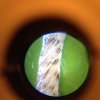here is my 2 cents, first why wasn't the thread just called " cotton, potentially harmful?" it just seems kind of funny that all this came about as an inquiry of an interest of optional wicking materials. anyways no questions or interests in any or all aspects of vaping is ignorant, I think the more info on what were all doing is the way it should be but imo every aspect of vaping is potentially harmful. I have heard it all, its the pg, its the vg, its the nicotine, then its batteries exploding from over charging, or melting from high amperage draw. also its the chromium from kanthal, I also have heard potential dangers of silica, ceramic wicks, potential leaching from the poly tanks, how about the copper positive post leaching into the juice. im sure there is more potentials out there that I forgot, oh yes now cotton! the bottom line is yes, im sure there is a potential for cotton as well and its great to figure out what it is if any but its just speculation and after a week or so this thread will be on page 10 just like all the other potentials that have come before. I know vaping has improved my health in the 3 years since quitting cigs but I also know that it has its own hazards as well, no matter what were vaping there will be potentials. I doubt very much that there is a such thing as a 100 percent healthy vape.









